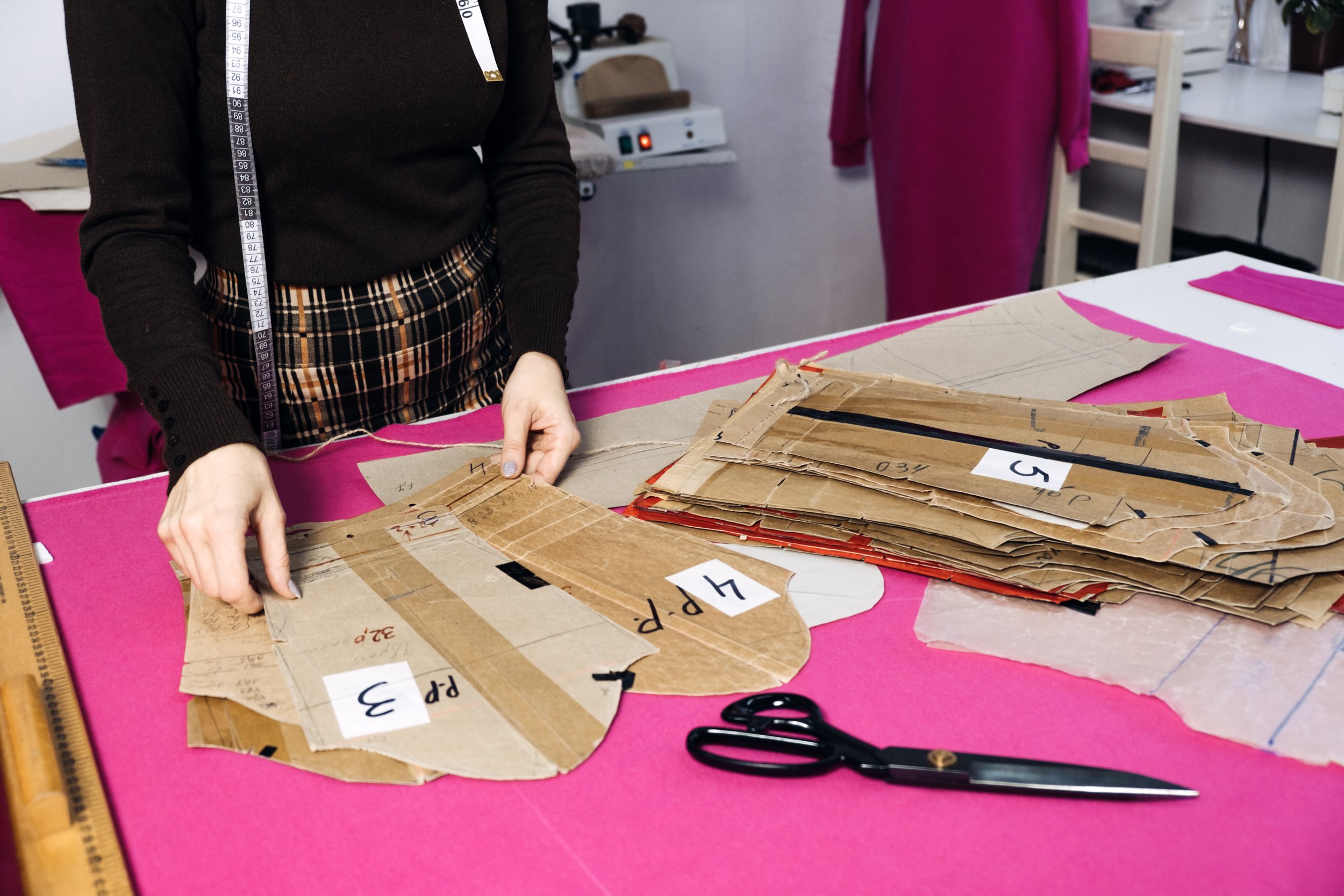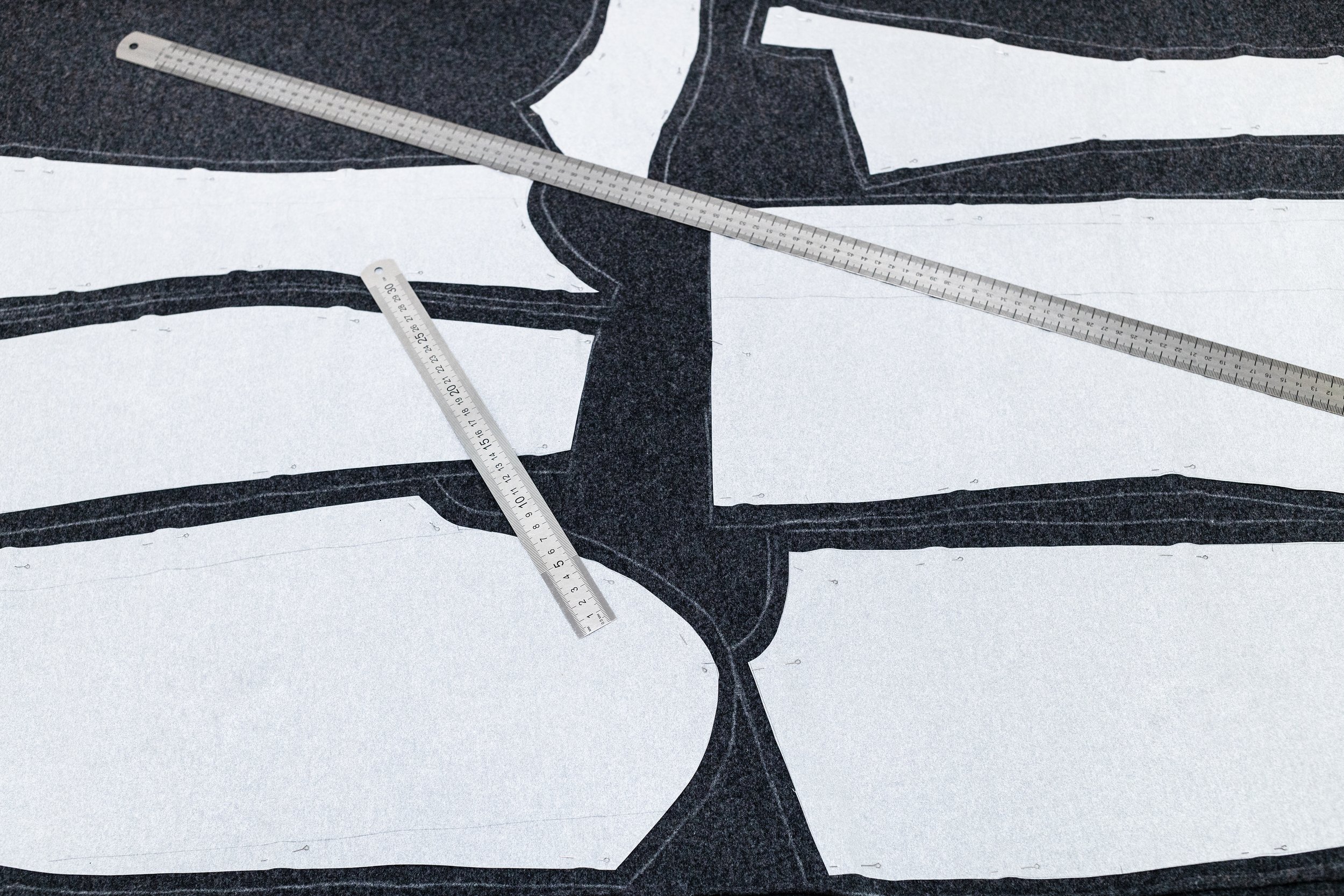Should You be Fixing Your Pattern Makers Work?
I get it, if you are designer you are visual and tactile. Things just make more sense to you if you can try to fit the pieces together in your own way. Perhaps you are a bit of a control freak like me and you feel like you can get it done faster and better if the solution comes from you. When it comes to your patterns, what you have been working on with your pattern maker, can sometimes benefit from your input, but it can also put you both in an uncertain position and jeopardize a project.
Knowing when to include your input and other times when it is best to trust the process can be tricky. I know some pattern makers will draw a very hard line to never touch their pattern, but I’m hesitant to go so far because sometimes a visual dialog is better than a verbal one. Here’s how I like to work:
What I like my clients to fix
If you think the neckline shape is not quite right or a seam isn’t in the right position, by all means, mark where you want this to be on the pattern. Sometimes it’s rather complex to try to explain this otherwise. I don’t want to stare at your written notes to figure out what you mean by “move middle seam over 3/4”. My question then is “which way” and we lose time waiting for email responses.
When approaching pattern fixes, always try to separate what you can easily say vs things that are better demonstrated. For instance “The sleeve is too short. Add 2” to the length, keep the same opening.” Easy, right? There is no need for you to waste postage or time taking photos to create a visual of this. Try to be as straightforward as possible.
I have been making patterns for many years and I also work in a digital environment. This means I’m super fast so it’s not worth your time to fix everything perfectly. Just get your point across and I’ll do the rest!
What I don’t like my clients to fix
If there are any oddities in the fit, maybe a pucker here, or a dragline there. The fit of a crotch is weird, etc. In these cases, don’t attempt to fix the pattern for this. You can absolutely pin this area out and make markings on the pattern where the issue is. By all means, detail the trouble using photos with arrows and your best descriptive words about what you are seeing.
Leave any grey areas like this alone and in the hands of your pattern maker. More than likely you are not a pattern maker yourself and pattern corrections are not your forte- just your best guess. Creative communication is alwasy encouraged. But If you are not 100"% positive what you are doing is right, then then this is your sign to leave things alone and address the issue as an email instead. Chances are, it will take me maybe 30 minutes to fix an issue if I can see the problem. You may spend hours, or even days trying to get it just right.
Sometimes revisions are not straightforward and what you think is the problem could be the symptom of something else. This is by far the most common scenario that I see when it comes to fixing patterns.
Here’s where things get dicey
If I get a fixed pattern returned to me that resembles nothing of what I originally provided and without any notes on the issue, I have no other option but to follow what you did exactly. At this point I am no longer responsible for the fit. You are. If I modify anything then I am changing your work and can be acccused of not following through on what you wanted. In my experience, it’s better to just leave it alone.
Another scenario is when I get a pattern that is fixed with the disclaimer that you think you did what you thought was correct, but “I trust your judgement” to fix it correctly. I understand where this is coming from, but if this case arises, just be prepared that I may do something completely different than what you would even consider.
The one thing you absolutely must do if you are going to fix your pattern makers work
If you make an absolute mess chopping and hacking the pattern, do not try to make it look pretty by making a new pattern piece. As much as both you and I would love a pristine new pattern shape, it adds a completely new element to the conversation. I need to see how this relates to what I have on file. With a new pattern piece, I have to digitize your new piece and then overlay it over the top of what I had previously done, (sometimes seam allowance is included, sometimes not and it’s a mystery for me). Also, it could be missing the grainlines, center front indications, or any other critical points that I work from. If we are building on the same pattern then we can eliminate any steps in between. Embrace the ugly hacked up mess and we will go with it.
Who else should not be fixing your pattern makers work
I’d like to say your pattern grader, but I get it, sometimes if your pattern needs to match 100% exactly for an accurate grading and it’s not going to be noticeable or if by changing a curve ever so slightly yields a better shape for all sizes, then it’s no biggie. Just beware of large changes. Always double check the base size of your pattern again to ensure nothing changed or what was done was minute.
But the one party that should absolutely not be making any changes to your patterns is your factory. I don’t care how close you are or how much you trust them. This is about chain of responsibility in a potentially high stakes investment. If a discrepancy is found you must bring it up with the patter maker first to double check. It is completely possible that your factory may be misunderstanding how it is intended to go together (I’ve had this happen so many times!). If there is a mistake make sure it clear who is responsible for fixing.
Trust the process
If you are hiring a professional to manage the fit and look of your brand, trust that they know what they are doing. Maybe you feel it’s faster to do it yourself, but after reading all this- is it really?


